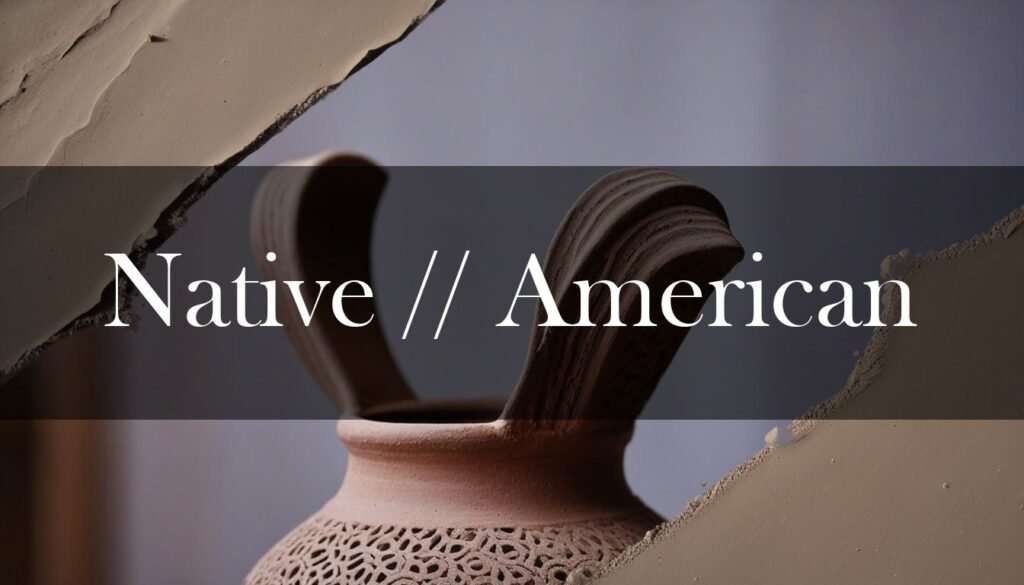Native American pottery is more than just crafted clay; it’s a vibrant narrative etched in earth, water, and fire, reflecting a rich tapestry of cultural heritage, environmental adaptation, and artistic innovation. The story of Native American pottery is deeply intertwined with the diverse landscapes and traditions of the many tribes across the continent, each region lending its unique character to the art form. From the micaceous clay pots of Taos and Picuris Pueblos in New Mexico, shimmering with mica sourced from areas like the Petaca District, to the sedimentary clays used by the Diegueño and Paipai tribes of Southern California, colored in buffs, pinks, lavenders, and grays from the Colorado River and ancient desert lakes, the very materials speak of a profound connection to the land. Even the Ancestral Puebloans, early inhabitants of the Southwest, utilized alluvial clays rich in iron, their pots fired in open fires, bearing witness to the ingenuity and resourcefulness of early potters. Each clay source, carefully selected and processed, tells a story of environmental stewardship and cultural practice, echoing the rituals and respect.
The beauty of Native American pottery lies not only in its form but also in its decoration, where techniques like painting, carving, and burnishing transform simple vessels into masterpieces of cultural expression. Acoma Pueblo pottery, for instance, is celebrated for its delicate thin walls and intricate black-on-white designs, the fine lines creating geometric patterns and depictions of nature. Hopi potters, descendants of the renowned Nampeyo, craft buff-colored pottery adorned with Migration patterns, Eagles, and Butterfly Maidens, while the artists of San Ildefonso Pueblo, like Maria and Julian Martinez, developed the iconic black-on-black technique, etching matte designs onto polished surfaces. Navajo pottery incorporates a wide range of styles, from terra cotta-colored clay with graduated bands to pieces polished with pine pitch, showcasing motifs like Kokopelli and Yei figures, testament to the tribe’s cultural assimilation and artistic adaptation. In the Southeastern United States, Mississippian pottery features incised and engraved decorations, with vibrant slips made from galena for white and hematite for red, with “negative painting” techniques enhancing the intricate designs. Each stroke, each carving, is imbued with symbolic meaning, a visual language that speaks of clan affiliations, ancestral stories, and spiritual beliefs. You can also explore more about exploring African pottery techniques.
“The designs became more intricate, incorporating images of nature, humans, and deities, each telling a story and holding deep cultural significance.”
Over time, the function of Native American pottery has evolved, from its initial utilitarian purpose to a powerful form of ceremonial and artistic expression. Early pottery served the practical needs of settled tribes, storing water, grains, and seeds, and providing essential cooking vessels. As societies developed, pottery took on a sacred role, with specific vessels crafted for religious rituals, ceremonies, and public events.
The designs became more intricate, incorporating images of nature, humans, and deities, each telling a story and holding deep cultural significance. Today, Native American pottery continues to be a vital cultural practice, promoting cultural sovereignty and economic empowerment within Native American communities. Moreover, understanding the role of pottery in archeology helps unearth more about the past.
Contemporary artists like Gerald A. Pinto blend traditional Navajo pottery with modern materials like copper and turquoise, while Virgil Ortiz integrates Cochiti pottery techniques with contemporary themes and social commentary, giving voice back to the clay. Chase Kahwinhut Earles revives Caddo pottery with Indigenous futurism, referencing science fiction to make the art form more accessible and relevant, ensuring the cultural survival of his people. These artists, and many more, continue to innovate and challenge traditional techniques, proving that Native American pottery is a living, breathing art form, constantly evolving and adapting to the world around it.
- Museum of Indian Arts & Culture in Santa Fe
- Arizona State Museum
- Indian Pueblo Cultural Center in Albuquerque
- Museum of the Cherokee People in North Carolina
For those eager to learn more, institutions like the Museum of Indian Arts & Culture in Santa Fe and the Arizona State Museum offer invaluable resources, from exhibitions showcasing historic and contemporary pottery to educational programs that delve into the stories behind the art. The Indian Pueblo Cultural Center in Albuquerque and the Museum of the Cherokee People in North Carolina provide immersive experiences, celebrating the art, history, and culture of their respective communities. These cultural centers and museums serve as vital bridges, connecting us to the rich heritage of Native American pottery and fostering a deeper appreciation for the artistry and cultural significance of these timeless creations.




